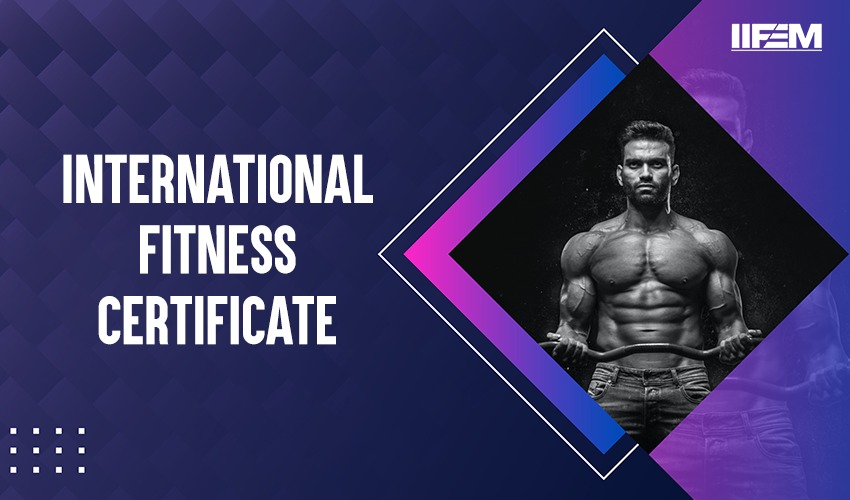
How to Build a Perfect Ketogenic Meal Plan for Maximum Results
Building a perfect ketogenic meal plan starts with balancing high-fat, moderate-protein, and very low-carb foods to shift your body into ketosis. A 2024 study published in iScience found that a well-formulated keto diet can lead to significant visceral fat loss while preserving muscle mass, enhancing overall health outcomes.
Start by Understanding Your Daily Macros
Before putting any food on your plate, the first step is calculating your daily macronutrient requirements. A ketogenic diet typically requires 70-75% of your calories from fats, 20-25% from protein, and just 5-10% from carbs. This helps shift your body into a fat-burning state called ketosis. Use a keto calculator based on your body weight, age, activity level, and fitness goals to determine your specific macro breakdown. Staying consistent with these ratios is key for making your keto diet plan successful.
Pick the Right Fats to Fuel Your Day
Healthy fats are the heart of any keto meal plan. Avocados, olive oil, coconut oil, ghee, and nuts are excellent sources that keep you full and satisfied. These fats are not only energy-rich but also support hormone health and cognitive function. Avoid processed seed oils and trans fats found in packaged foods. Adding a variety of high-quality fats to your meals can make a significant difference in how your body performs during ketosis and help reduce carb cravings.
Choose Quality Proteins Without Going Overboard
While protein is essential for muscle maintenance, overconsumption can kick you out of ketosis by converting excess protein into glucose. Stick to moderate portions of chicken, fish, eggs, and beef. Try to include wild-caught or grass-fed options when possible. Organ meats and bone broth are also highly nutritious options that fit well into a keto diet for beginners. Proper protein intake ensures you're preserving lean muscle mass while promoting fat loss.
Fill Your Plate with Low-Carb Vegetables
Not all vegetables are created equal on keto. Focus on nutrient-dense, low-carb options like spinach, kale, broccoli, cauliflower, zucchini, and bell peppers. These provide essential vitamins, fiber, and antioxidants without kicking you out of ketosis. Try roasting, steaming, or sautéing them in healthy fats to enhance flavor. Avoid high-carb choices like potatoes, corn, and peas. Vegetables should take up a good portion of your plate to keep digestion smooth and micronutrients in check.
Plan for Snack Times the Smart Way
Smart snacking can make or break your results. Instead of reaching for high-carb options, go for keto snacks like cheese sticks, boiled eggs, olives, avocado slices, or nut butter. These not only satisfy hunger between meals but also help you stick to your macros. Keeping keto-friendly snacks on hand reduces the chances of slipping up, especially during a busy day. Portable options like beef jerky and coconut chips are great for people constantly on the go.
Stay Hydrated and Manage Electrolytes
A common mistake many beginners make is ignoring hydration and electrolyte balance. As your body flushes out glycogen, it also loses water and important minerals like sodium, potassium, and magnesium. Drinking enough water and adding sea salt, leafy greens, and bone broth to your meals can help avoid fatigue, headaches, and muscle cramps. For an extra boost, electrolyte powders made for the keto diet can be a helpful addition.
Structure Your Meals for Simplicity and Success
Meal planning and prep can remove decision fatigue and help with long-term consistency. A simple daily structure might include eggs and avocado for breakfast, grilled protein with greens and olive oil for lunch, and a fatty cut of meat with sautéed veggies for dinner. Batch-cooking and rotating a few go-to meals can keep things efficient without becoming repetitive. The more prepared you are, the less tempted you'll be to reach for foods outside your keto diet plan.
Track Progress and Adjust When Needed
Monitoring your energy levels, appetite, physical changes, and even blood ketone levels can provide valuable insight into how well your plan is working. If weight loss stalls or energy dips, it could be time to revisit your macros or meal timing. Staying flexible and listening to your body ensures you're on the path to long-term success. The goal is sustainable fat loss, improved focus, and steady energy, all achievable with a solid keto approach.
How IIFEM Equips Fitness Professionals for Keto Success
For fitness trainers aiming to master ketogenic nutrition, IIFEM provides an in-depth course designed to build real expertise. The Ketogenic Diet course at IIFEM breaks down the science of low-carb, high-fat nutrition—helping trainers understand how to tailor keto meal plans, support clients through keto adaptation, and address common performance challenges.
IIFEM (International Institute of Fitness Excellence and Management) goes beyond The Ketogenic Diet by offering a diverse range of specialized courses designed to promote overall health and wellness. These include the Dietary Supplementation Specialist course, which provides in-depth knowledge about optimizing nutrition through supplements; the Diet Management Specialist course, aimed at mastering effective dietary planning for various health goals; and the Immunity Boosting Plan, which focuses on strategies to enhance the body's natural defense system.
Each course is thoughtfully crafted to cater to health enthusiasts, fitness professionals, and those seeking to deepen their understanding of nutrition and wellness. With IIFEM, you gain the expertise to lead a healthier life and help others achieve their wellness goals.
Faqs
1. What is a ketogenic meal plan and how does it work?
A ketogenic meal plan is high in fats, moderate in protein and very low in carbs. It shifts your body into ketosis, where fat becomes the primary energy source, promoting fat loss and muscle preservation.
2. How do I calculate my macros for a keto diet?
Use a keto calculator to determine your daily requirements. Typically, 70–75% of calories come from fats, 20–25% from protein and 5–10% from carbs, adjusted for your age, weight, activity level and goals.
3. Which foods should I focus on for a keto diet?
Prioritise healthy fats (avocado, olive oil, ghee), moderate proteins (chicken, eggs, fish) and low-carb vegetables (spinach, broccoli, zucchini). Avoid processed oils, sugary foods and high-carb vegetables like potatoes or corn.
4. How can I manage electrolytes and hydration on keto?
Drink plenty of water and include sodium, potassium and magnesium in your meals. Bone broth, leafy greens and electrolyte powders help prevent fatigue, cramps and headaches during keto adaptation.
5. Can I include snacks on a ketogenic meal plan?
Yes. Keto-friendly snacks like cheese sticks, boiled eggs, olives, avocado slices, nuts or beef jerky help manage hunger, maintain macros, and keep energy levels stable throughout the day.
Category
Recent Blog

Why is insulin neede... Read more
July 05,2023
10 Tips for Strength... Read more
August 14,2023
Sample Strength and ... Read more
September 06,2023
Why are some lifters... Read more
September 15,2023
Why do Barbells and ... Read more
September 22,2023
Secret Routine to Bu... Read more
September 26,2023
When to use Insulin,... Read more
September 28,2023
Why lifters should u... Read more
September 29,2023
What is power traini... Read more
October 09,2023
The Future of Fitnes... Read more
October 17,2023
Why Pursue a Fitness... Read more
October 21,2023
Career Paths for Cer... Read more
October 31,2023
Elevating Your Perso... Read more
November 21,2023
Gym Safety Correctiv... Read more
December 26,2023
5 Different Types of... Read more
December 27,2023
Elevate Your Fitness... Read more
December 28,2023
Embark on Your Fitne... Read more
January 24,2024
Mastering Nutrition ... Read more
January 24,2024
Building Strength wi... Read more
January 27,2024
Boost Your Career: B... Read more
January 27,2024
7 main reasons why y... Read more
February 15,2024
Unlocking Essential ... Read more
February 19,2024
Unlock Your Fitness ... Read more
February 20,2024
Unveiling the Path t... Read more
February 28,2024
How to choose the ri... Read more
February 29,2024
Strengthening Weak S... Read more
March 20,2024
How a Fat Loss and E... Read more
March 27,2024
Transformative Insig... Read more
March 27,2024
The Importance of a ... Read more
April 10,2024
Mastering the Art of... Read more
April 22,2024
Unlocking Your Caree... Read more
April 23,2024
The Evolution of Per... Read more
May 27,2024
Elevate Your Fitness... Read more
May 28,2024
Choosing the Right P... Read more
June 25,2024
Role of Protein in F... Read more
June 26,2024
Career Opportunities... Read more
June 27,2024
How Fitness Certific... Read more
July 29,2024
Building a Successfu... Read more
July 30,2024
Qualities to Look fo... Read more
August 21,2024
How Gym Trainer Cert... Read more
August 28,2024
How Fitness Trainer ... Read more
September 20,2024
The Role of a Person... Read more
September 23,2024
Immunity Boosting Pl... Read more
October 17,2024
How Fitness Trainers... Read more
October 22,2024
Transform Your Fitne... Read more
October 28,2024
Certified vs. Uncert... Read more
November 22,2024
The Role of Nutritio... Read more
November 25,2024
The Importance of Co... Read more
December 28,2024
5 Powerlifting Train... Read more
December 28,2024
How Personal Trainer... Read more
January 24,2025
Essential Online Nut... Read more
January 25,2025
How Personal Trainer... Read more
January 27,2025
5 Immunity-Boosting ... Read more
March 01,2025
What to Look for in ... Read more
March 01,2025
The Impact of a Pers... Read more
March 27,2025
The Benefits of Beco... Read more
March 28,2025
How to Choose the Ri... Read more
April 24,2025
Turbo Test: Unlockin... Read more
April 25,2025
10 Powerful Yoga Asa... Read more
May 24,2025
How to Track Your Ca... Read more
May 26,2025
Fast-Track Your Fitn... Read more
May 28,2025
Top Career Paths You... Read more
May 29,2025
10 Reasons to Enroll... Read more
June 23,2025
How to Turn Your Pas... Read more
June 28,2025
Trainer vs Coach Wha... Read more
June 30,2025
How IIFEM Plans to C... Read more
July 01,2025
Go Global with IIFEM... Read more
July 11,2025
How to Avoid the Top... Read more
July 22,2025
No English No Proble... Read more
July 25,2025
How Education Can El... Read more
August 19,2025
Real Stories from II... Read more
August 20,2025
Why Gym Owners Prefe... Read more
August 26,2025
How Science Based Tr... Read more
August 31,2025
Why an International... Read more
September 10,2025
What Makes IIFEM the... Read more
September 15,2025
How to Build a Succe... Read more
September 22,2025
Your Passion and Our... Read more
September 27,2025
Fat Loss & Endurance... Read more
October 16,2025
Benefits of Whey Pro... Read more
October 21,2025
Strength and Conditi... Read more
October 27,2025
From Trainer to Gym ... Read more
October 29,2025
Powerlifting Trainin... Read more
November 12,2025
Pre-Workout vs Post-... Read more
November 17,2025
Building a Hybrid Fi... Read more
November 19,2025
Why Most Weight Loss... Read more
November 21,2025



